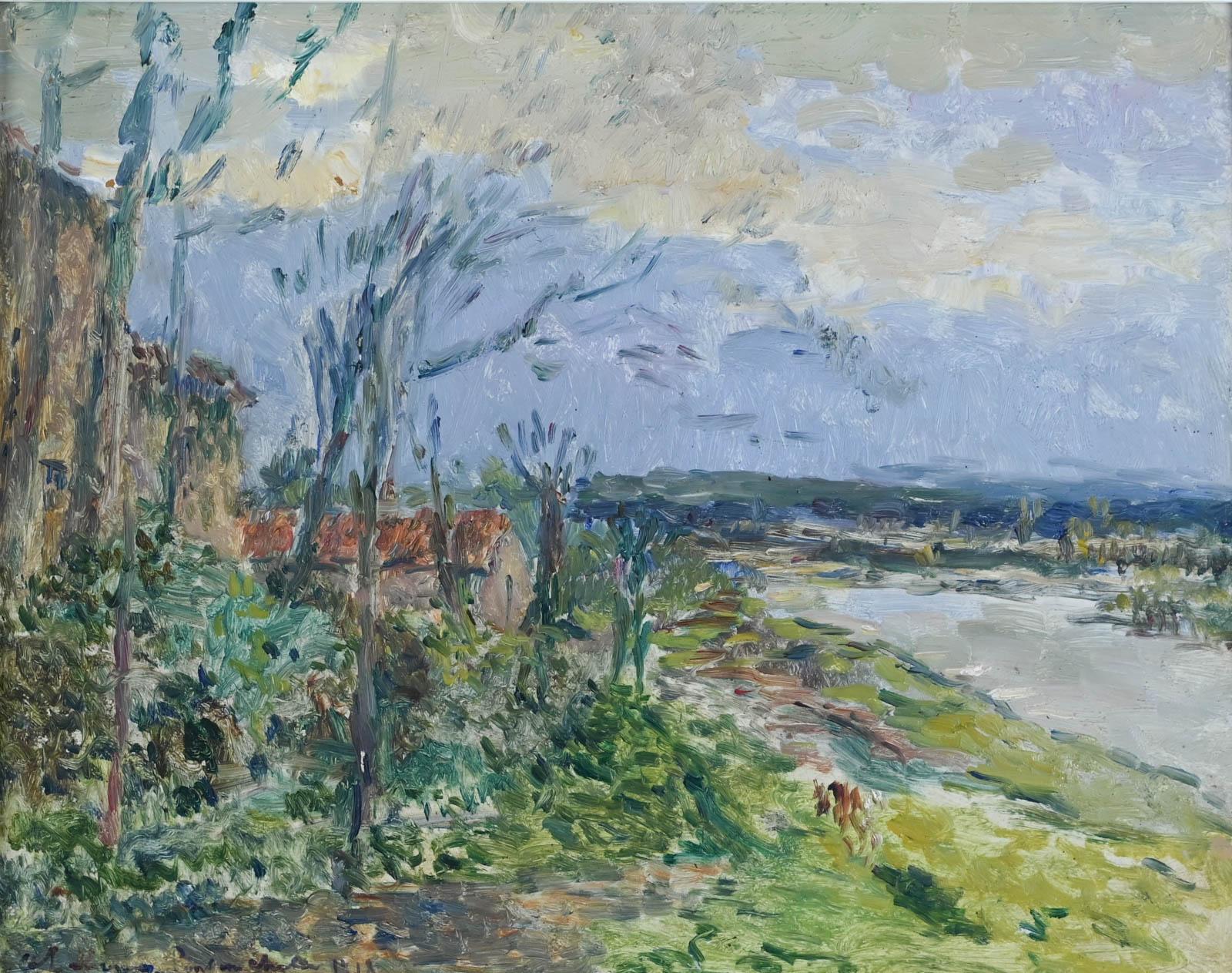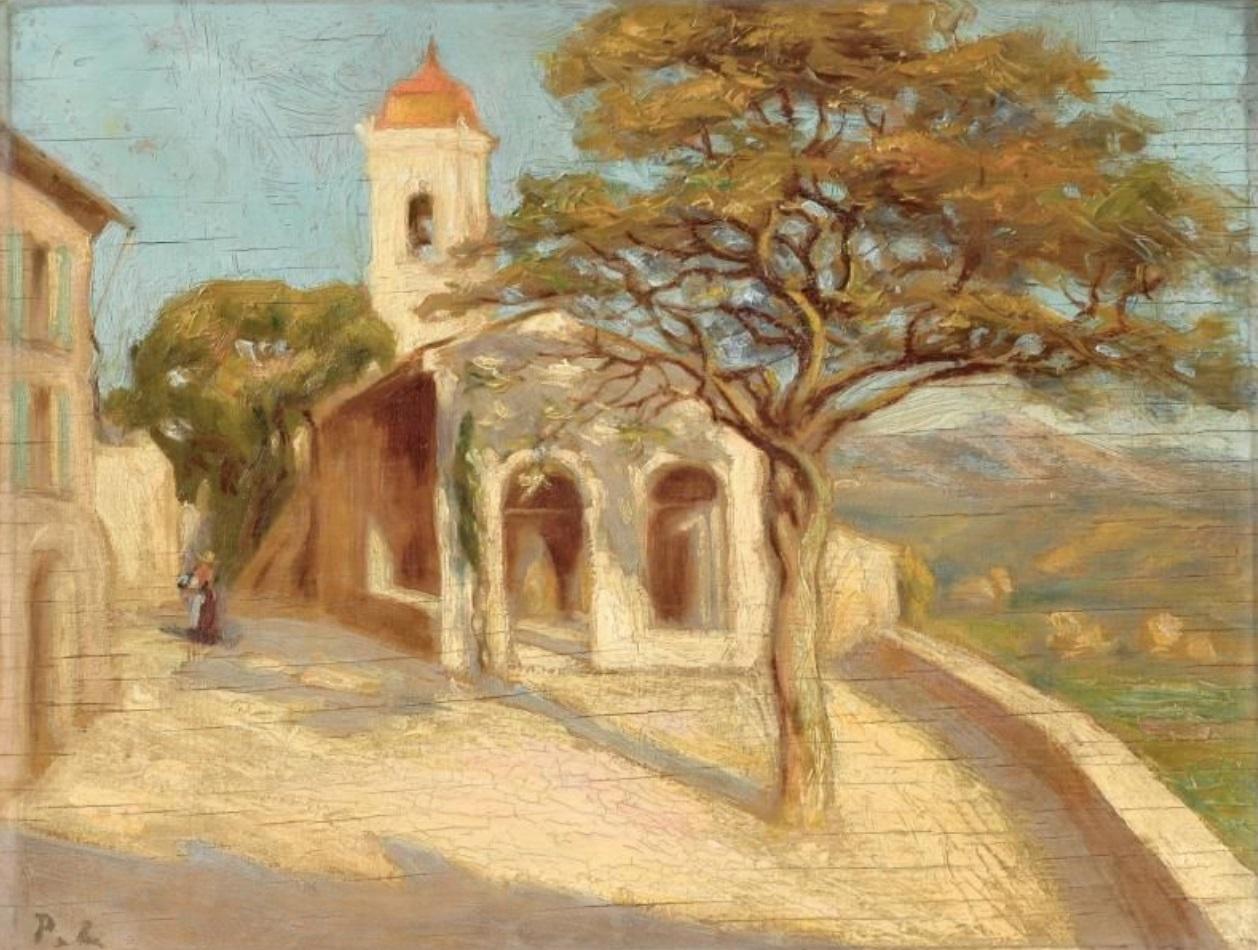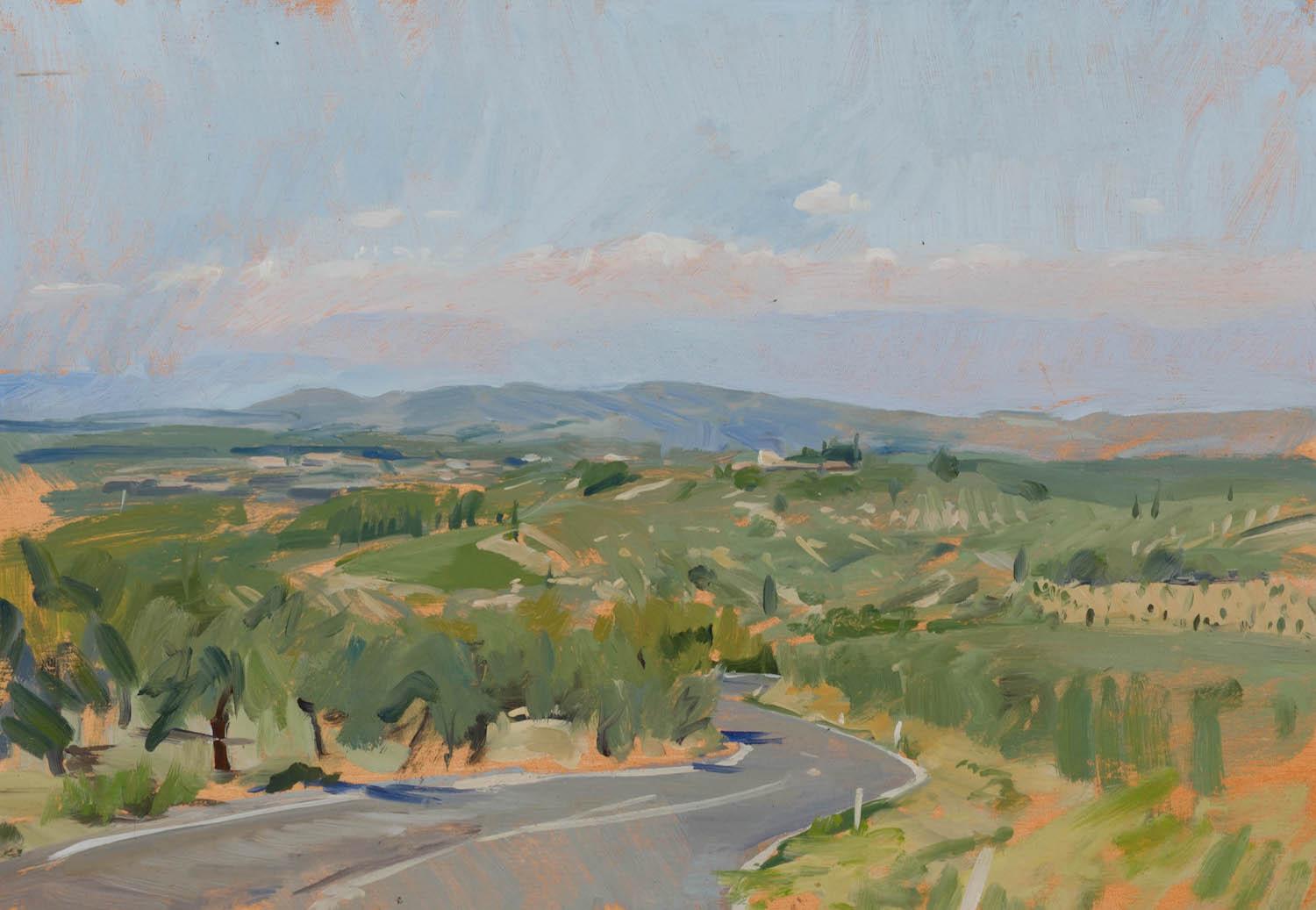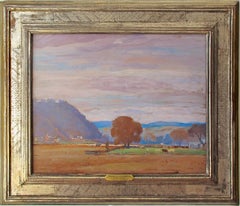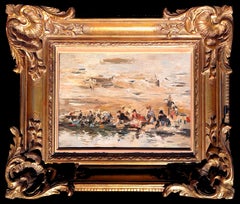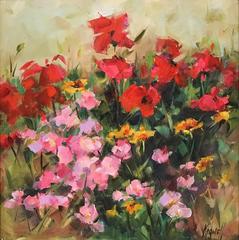
Poppies and Primroses
View Similar Items
1 of 7
Christy KidwellPoppies and Primroses2016
2016
About the Item
- Creator:Christy Kidwell (1952, American)
- Creation Year:2016
- Dimensions:Height: 18.25 in (46.36 cm)Width: 18.25 in (46.36 cm)Depth: 1.75 in (4.45 cm)
- Medium:
- Movement & Style:
- Period:
- Condition:Additional pictures available by request.
- Gallery Location:San Antonio, TX
- Reference Number:1stDibs: LU40531560983
You May Also Like
- L’embarquement by Gaston La ToucheBy Gaston La ToucheLocated in New Orleans, LAGaston La Touche 1854 - 1913 French L’embarquement The Embarkment Signed "Gaston La Touche" (lower right) Oil on panel A fashionable group of merrymakers boards a rowboat at sundown in this oil on panel by renowned French painter Gaston La Touche. Softly lit and lushly detailed, the work represents the artist’s talent for capturing the gaiety of the Belle Époque. With its luminous coloring and feathery brushwork, this oil evokes the style and joie de vivre of the era rendered in La Touche’s distinctive, mature style. Fresh and airy, the work is a beautiful example of the artist’s skill at capturing the subtle qualities of light and color. Set against the plein air backdrop of a wooded pond awash in the soft glow of the golden hour, the scene reflects the influence of the Impressionists. The subject also recalls works by Manet, Monet and Renoir, who delighted in depictions of modern leisure among the expanding middle class. The scene is an informal one, and its unconventional cropping suggests that the viewer is invited to take a seat in the boat and join the group on their outing. Such relaxed, inviting scenes were remarkably popular among contemporary, modern audiences. However, La Touche's style is singular, possessing an element of fantasy and romance that set him apart from the Impressionists. Gaston La Touche was born in St. Cloud, outside of Paris, in 1854, and he showed a keen interest in art from a young age. At ten years old, he began taking private art instruction, which lasted until 1870, when his family was forced to flee to Normandy amid the Franco-Prussian War. This was the only formal art training La Touche would ever receive. Despite his lack of Academy training, he made his debut at the Paris Salon of 1875 with a sculptural medallion and etchings, and he exhibited his first painting at the Salon of 1881. Although he began his career painting dark-toned realist compositions, by 1890, his style had shifted to what would become his signature — a lighter, brighter, idealistic society world. The artist was associated with practically all of the most influential artists and thinkers of late 19th century France, including Édouard Manet, Edgar Degas, Émile Zola, who frequently met at the legendary Cafe de la Nouvelle Athenes to share their thoughts on modern society. In 1900, he was named a Chevalier of the Legion d'Honneur and an Officer in 1909. Additionally, he was well-decorated at the grand...Category
Late 19th Century Impressionist Figurative Paintings
MaterialsPanel, Oil
- "Up the Valley"By Daniel GarberLocated in Lambertville, NJIn an original Harer frame. Illustrated in "Daniel Garber Catalogue Raisonne" Vol. II, pg. 271, and in book titled "Blue Chips", pg. 33 Jim’s of Lambertville is proud to offer this artwork by: Daniel Garber (1880-1958) One of the two most important and, so far, the most valuable of the New Hope School Painters, Daniel Garber was born on April 11, 1880, in North Manchester, Indiana. At the age of seventeen, he studied at the Art Academy of Cincinnati with Vincent Nowottny. Moving to Philadelphia in 1899, he first attended classes at the "Darby School," near Fort Washington; a summer school run by Academy instructors Anshutz and Breckenridge. Later that year, he enrolled at the Pennsylvania Academy of the Fine Arts. His instructors at the Academy included Thomas Anshutz, William Merritt Chase and Cecilia Beaux. There Garber met fellow artist Mary Franklin while she was posing as a model for the portrait class of Hugh Breckenridge. After a two year courtship, Garber married Mary Franklin on June 21, 1901. In May 1905, Garber was awarded the William Emlen Cresson Scholarship from the Pennsylvania Academy, which enabled him to spend two years for independent studies in England, Italy and France. He painted frequently while in Europe, creating a powerful body of colorful impressionist landscapes depicting various rural villages and farms scenes; exhibiting several of these works in the Paris Salon. Upon his return, Garber began to teach Life and Antique Drawing classes at the Philadelphia School of Design for Women in 1907. In the summer of that same year, Garber and family settled in Lumbertville, Pennsylvania, a small town just north of New Hope. Their new home would come to be known as the "Cuttalossa," named after the creek which occupied part of the land. The family would divide the year, living six months in Philadelphia at the Green Street townhouse while he taught, and the rest of the time in Lambertville. Soon Garber’s career would take off as he began to receive a multitude of prestigious awards for his masterful Pennsylvania landscapes. During the fall of 1909, he was offered a position to teach at the Pennsylvania Academy as an assistant to Thomas Anshutz. Garber became an important instructor at the Academy, where he taught for forty-one years. Daniel Garber painted masterful landscapes depicting the Pennsylvania and New Jersey countryside surrounding New Hope. Unlike his contemporary, Edward Redfield, Garber painted with a delicate technique using a thin application of paint. His paintings are filled with color and light projecting a feeling of endless depth. Although Like Redfield, Garber painted large exhibition size canvases with the intent of winning medals, and was extremely successful doing so, he was also very adept at painting small gem like paintings. He was also a fine draftsman creating a relatively large body of works on paper, mostly in charcoal, and a rare few works in pastel. Another of Garber’s many talents was etching. He created a series of approximately fifty different scenes, most of which are run in editions of fifty or less etchings per plate. Throughout his distinguished career, Daniel Garber was awarded some of the highest honors bestowed upon an American artist. Some of his accolades include the First Hallgarten Prize from the National Academy in 1909, the Bronze Medal at the International Exposition in Buenos Aires in 1910, the Walter Lippincott Prize from the Pennsylvania Academy and the Potter Gold Medal at the Art Institute of Chicago in 1911, the Second Clark Prize and the Silver Medal from the Corcoran Gallery of Art for “Wilderness” in 1912, the Gold Medal from the Panama-Pacific Exposition in San Francisco of 1915, the Second Altman Prize in1915, the Shaw prize in 1916, the First Altman Prize in 1917, the Edward Stotesbury Prize in1918, the Temple Gold Medal, in 1919, the First William A...Category
1940s American Impressionist Landscape Paintings
MaterialsOil, Panel
- Washers on the banks of La TouquesBy Eugène Louis BoudinLocated in Belgravia, London, London'Washers on the banks of La Touques' By Eugène BOUDIN (French 1824-1898) Oil on panel: 12 x 16.25 inches Framed size: 15.25 x 19 inches On the reverse of the frame: Old label beari...Category
20th Century Impressionist Landscape Paintings
MaterialsOil, Panel
- Pont du ChâteauBy Albert LebourgLocated in LE HAVRE, FRAlbert LEBOURG (1849-1928) Pont du Château, 1918 Oil on panel Size : 33 x 42 cm Signed and dated 1918 lower left. Origin : - Galerie Tuffier, Les Andelys, - Private collection, Pa...Category
1910s Impressionist Landscape Paintings
MaterialsOil, Panel
- The Chapel Of Protection In CagnesBy Paul LeducLocated in Gent, VOVLa Chapelle de la Protection in Cagnes, circa 1925 Oil on panel, signed with the monogram lower left 27 x 34.5 cm Bibliography: The Painters of Cagnes, exhibition catalogue, Château-Musée Grimaldi, 2011, p.62 Paul Leduc...Category
1920s Impressionist Landscape Paintings
MaterialsOil, Panel
- AfterglowBy Amy SidraneLocated in Pasadena, CAProvenance Acquired by the gallery directly from the artist Artist Statement "The effect from the afterglow resulted in a play of complementary colors ~ enhancing the mood." —Amy Si...Category
2010s Impressionist Landscape Paintings
MaterialsOil, Panel, Canvas



